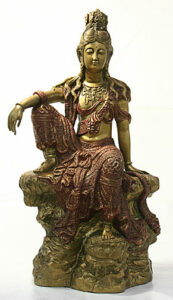The correlation between pulse diagnosis and constitution identification in traditional Chinese medicine.
Kristen Sparrow • February 16, 2017


I don’t understand the terms used here (AI), and don’t see the HRV data in the abstract, but I applaud the concept and effort. I would love to do a study like this. These are the correlations I’m trying to make with my HRV studies, with very mixed results.
The correlation between pulse diagnosis and constitution identification in traditional Chinese medicine.
Abstract
OBJECTIVES:
Our study aimed to correlate pulse wave parameters such as augmentation index (AI) and heart rate variability with traditional Chinese medicine (TCM) constitution for evaluating health status.
DESIGN:
Out of 177 subjects, 69 healthy subjects were enrolled in the present study, and others were excluded because of cardiovascular, liver, kidney, or other diseases. Each subject was invited to complete pulse wave examination and the Constitution in Chinese Medicine Questionnaire. Independent Student’s t-tests, Mann-Whitney tests, and binary logistic regression analysis were used to analyse the correlation between pulse wave parameters and TCM constitution.
RESULTS:
Qi-deficient individuals had higher AI (p=0.006) and lower diastolic blood pressure (p=0.011); yang-deficient individuals had lower dP/dt max (p=0.030), systolic blood pressure (p=0.020), and pulse pressure (p=0.048); and damp-heat individuals had higher subendocardial viability index (SEVI) scores (p=0.011). We then categorized the phlegm dampness and yang-deficiency individuals into the cold group and those with damp-heat and yin-deficiency into the heat group. A comparison of the two constitution groups showed higher AI in the cold group (p=0.026). Binary logistic regression analysis demonstrated that only AI was a determinant, as evidenced by the finding that an increase of one unit in AI corresponded to an increase of 5% in the odds ratio for individuals to have a cold constitution (p=0.026).
CONCLUSIONS:
Individuals with qi-deficient and cold constitutions had higher AI and lower SEVI, potentially reflecting an increase in arterial stiffness. This study can provide a basis for further investigation of the physiological indicators of TCM constitutions in modern medicine.

